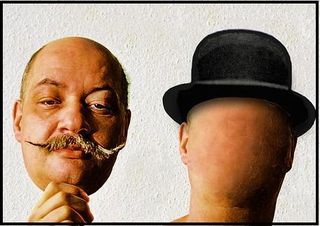By Dr. Ken Broda Bahm:
Speaking of faces, it turns out that Facebook is planning to sue Mark Zuckerberg. No, not that Mark Zuckerberg, the iconic founder of the world’s social media homepage, but an Israeli businessman, formerly named Rotem Guez, who legally changed his name to Mark Zuckerberg in order to support a business that can only make sense in today’s ephemeral market: selling “likes” to companies who, you know, want to feel more “liked” in their online presence. Facebook itself might even fit in that category, since it and Mark Zuckerberg — the real one, CEO and President — have increasingly faced both criticism and impending lawsuits for privacy practices and for integrating personal information into advertising. Increasingly, Facebook is simply seen as another very large and powerful corporation. Setting aside the personality of Zuckerberg (both of them), it is interesting to see how quickly the fresh, young, and edgy start-up can morph into the faceless monolith in the market.
We’ve written before on the effect of personifying companies in litigation in order to address this “faceless” presumption. Recent research coming out of Northwestern, however, points to some new implications for corporate identity in the courtroom. Specifically, the study (Waytz & Young, 2011) suggests that the more people think of a group as having a “mind,” the less individuals within that group are credited for having their own thoughts, intentions, and plans. In other words, a company’s perceived “corporate culture” can trump the individual agency of its executives and employees. This post takes a look at the research and its implications for companies in litigation.
The Study:
Two professors, one from Northwestern’s Kellogg School of Management and the other from Boston College’s Psychology department (Waytz & Young, 2011), looked at the effect of the perception that a company acts with a single will or plan, and found that “the more people attribute mind to a group, the less people attribute minds to individual members of that group.” Asking participants to evaluate specific corporations, sports teams, and governments, the researchers presented scenarios varying the type and cohesion of the organization, and then asked study participants to rate the extent to which the group has a mind (the ability to think, plan, and intend) and is responsible for collective actions, and the extent to which average members of that group have the same. Finding a consistent inverse relationship between the two, the authors argue that the research helps “explain how people justify hostility toward large collectives and how people come to treat members of groups as unique individuals.”
The Implications for Litigation:
1. Unify the Company when You Represent the Individual
When you are defending an individual for actions taken within the context of a large company, or working for an individual plaintiff against a large company, it helps to invoke the very factors of “group mind” that the authors investigate. One finding from the research is that several factors make it more likely that people will perceive a “group mind” in an organization: joint action, cohesion, and strong in-group identification. Emphasizing these makes it easier for jurors to attribute predatory qualities to the group and to see the company as a moral agent, one that can be held responsible for its actions and its choices.
2. Personify the Company in Corporate Defense
From the perspective of a group or a company, you might think that “cohesion,” “joint action,” and “strong in-group identification” are pretty good values. However, when it comes to evaluating the company in a context like litigation, the effect can be more akin to dehumanization: an attribution that encourages jurors and other fact-finders to see members of that organization in a light that prevents identification and empathy; It is hard to feel for a faceless monolith. Personify the company by choosing the company representative carefully, by having a strong and personalized story from the witness box, and by sharing more about the decision making process and the differences of opinion within the company — in short, everything that counters the notion of a “single mind.”
3. Measure the Bias Before the Panelist Becomes the Juror
The personification of companies is one aspect of potential bias, and Bloomberg recently noted that attorneys for corporations are finding it harder to weed out bias during jury selection. As Victor E. Schwartz, General Counsel of the American Tort Reform Association and a Shook Hardy & Bacon LLP partner puts it, “The old form of bias was when a juror may have had a personal interest in the case or a bias for a plaintiff or against a particular defendant.” Prejudice today “is more subtle and not always conscious,” he said. “It’s a blue-collar feeling that corporate America doesn’t really care, and that’s difficult to eliminate in voir dire.” It is difficult to eliminate in voir dire, however, only because the feeling is so common and its extremes are difficult to measure.
______
Related Post:
______
 Waytz, Adam; Young, Liane (2011). The Group-Member Mind Tradeoff: Attributing Mind to Groups versus Group Members Psychological Science (December)
Waytz, Adam; Young, Liane (2011). The Group-Member Mind Tradeoff: Attributing Mind to Groups versus Group Members Psychological Science (December)
Photo Credit: HaPe_Gera, Flickr Creative Commons
